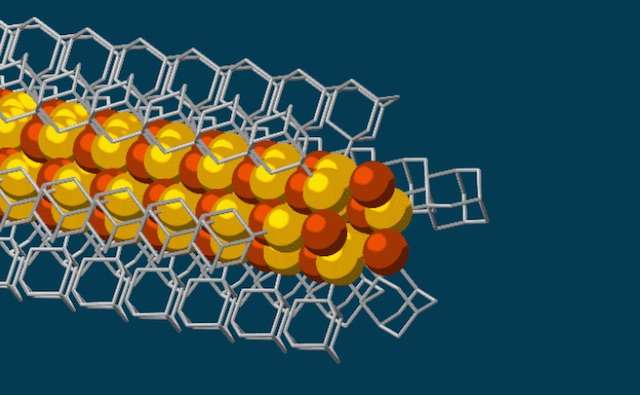'Lost' Memories in Alzheimer Sufferers May Be Recoverable, Says Study
A new study from MIT suggests that short-term memories lost to patients are still stored in the brain —and may be recoverable.

This team of researchers used diamonds to create the tiniest wires ever – and the possibilities for their use are endless.
Scientists at Stanford University and the Department of Energy's SLAC National Accelerator Laboratory have discovered a way to use diamondoids – the smallest possible bits of diamond – to assemble atoms into the thinnest possible electrical wires, just three atoms wide.
"What we have shown here is that we can make tiny, conductive wires of the smallest possible size that essentially assemble themselves," said Hao Yan, a Stanford postdoctoral researcher and lead author of the paper. "The process is a simple, one-pot synthesis. You dump the ingredients together and you can get results in half an hour. It's almost as if the diamondoids know where they want to go."
The needle-like wires have a semiconducting core – a combination of copper and sulfur known as a chalcogenide – surrounded by the attached diamondoids, which form an insulating shell.
Their minuscule size is important, Melosh said, because a material that exists in just one or two dimensions – as atomic-scale dots, wires or sheets – can have very different, extraordinary properties compared to the same material made in bulk. The new method allows researchers to assemble those materials with atom-by-atom precision and control.
For this study, the research team took advantage of the fact that diamondoids are strongly attracted to each other, through what are known as van der Waals forces. (This attraction is what makes the microscopic diamondoids clump together into sugar-like crystals, which is the only reason you can see them with the naked eye.)
They started with the smallest possible diamondoids – single cages that contain just 10 carbon atoms – and attached a sulfur atom to each. Floating in a solution, each sulfur atom bonded with a single copper ion. This created the basic nanowire building block.
The building blocks then drifted toward each other, drawn by the van der Waals attraction between the diamondoids, and attached to the growing tip of the nanowire.
"Much like LEGO blocks, they only fit together in certain ways that are determined by their size and shape," said Stanford graduate student Fei Hua Li, who played a critical role in synthesizing the tiny wires and figuring out how they grew. "The copper and sulfur atoms of each building block wound up in the middle, forming the conductive core of the wire, and the bulkier diamondoids wound up on the outside, forming the insulating shell."
The cadmium-based wires are similar to materials used in optoelectronics, such as light-emitting diodes (LEDs), and the zinc-based ones are like those used in solar applications and in piezoelectric energy generators, which convert motion into electricity.
"You can imagine weaving those into fabrics to generate energy," Melosh said. "This method gives us a versatile toolkit where we can tinker with a number of ingredients and experimental conditions to create new materials with finely tuned electronic properties and interesting physics."
(Source: DOE/SLAC National Accelerator Laboratory)
Click To Share This Big News With Your Friends – Photo released by Stanford's SLAC National Accelerator Laboratory
Be the first to comment